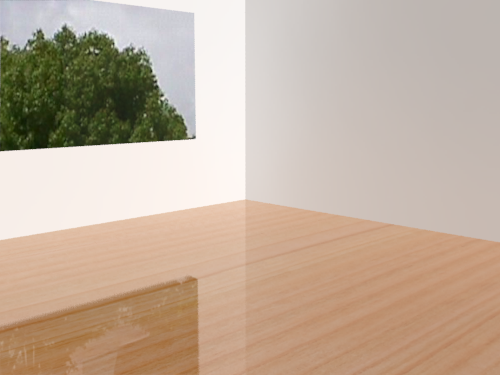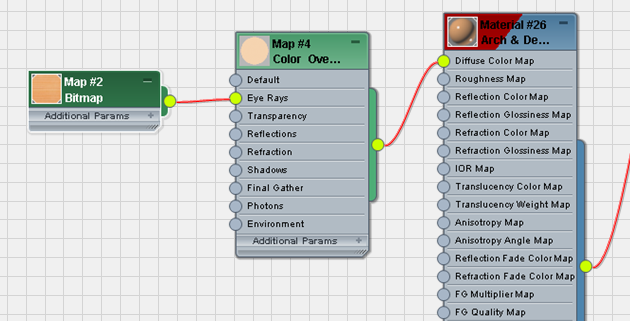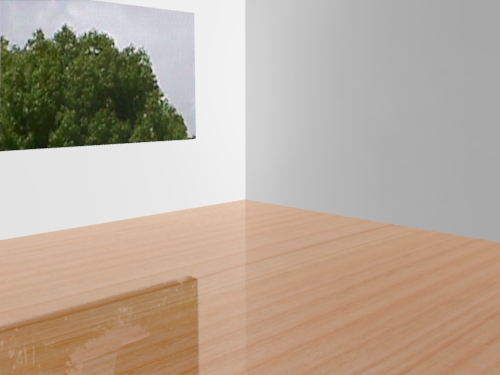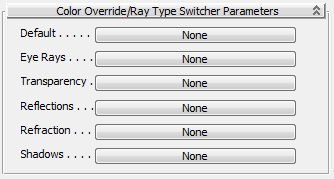Allows different types of rays to return different results.
“Eye rays” are the primary rays; the other ray types are considered secondary.
One use of this shader is to specify different environments, depending on the type of ray:
- Eye rays use a photographic background plate (the scene background).
- Reflection rays use a spherical, high-resolution environment.
Specifying a Reflections shader can speed up render time by sparing the renderer from having to ray-trace the scene.
- Final Gather rays use a shader suitable for lighting the scene.
Another use of the Color Override/Ray Type Switcher can be to eliminate color bleeding in the scene.

Wood grain on floor causes color bleeding on the walls, especially at the right of the scene.
The solution is to use a Color Override/Ray Type Switcher, and wire the diffuse map so it affects Eye Rays only.

Color Override/Ray Type Switcher restricts the effect of a bitmap to Eye Rays only.

When the bitmap affects Eye Rays only, color bleeding is gone.
Interface
Color Override/Ray Type Switcher Parameters rollout

- Default
-
Sets the default shader: If another ray type does not have a shader explicitly specified, this shader is used.
- Eye Rays
-
Sets the shader used for eye rays.
- Transparency
-
Sets the shader used for transparency.
- Reflections
-
Sets the shader used for reflections.
- Refraction
-
Sets the shader used for refraction.
- Shadows
-
Sets the shader used for shadows.
Environment & Indirect Illumination Override rollout

- Final Gather
-
Sets the shader used for Final Gather.
- Photons
-
Sets the shader used for photons.
- Environment
-
Sets the shader used for the environment. This is distinct from the Eye Ray shader: It is used for secondary rays unless those are assigned a shader of their own.